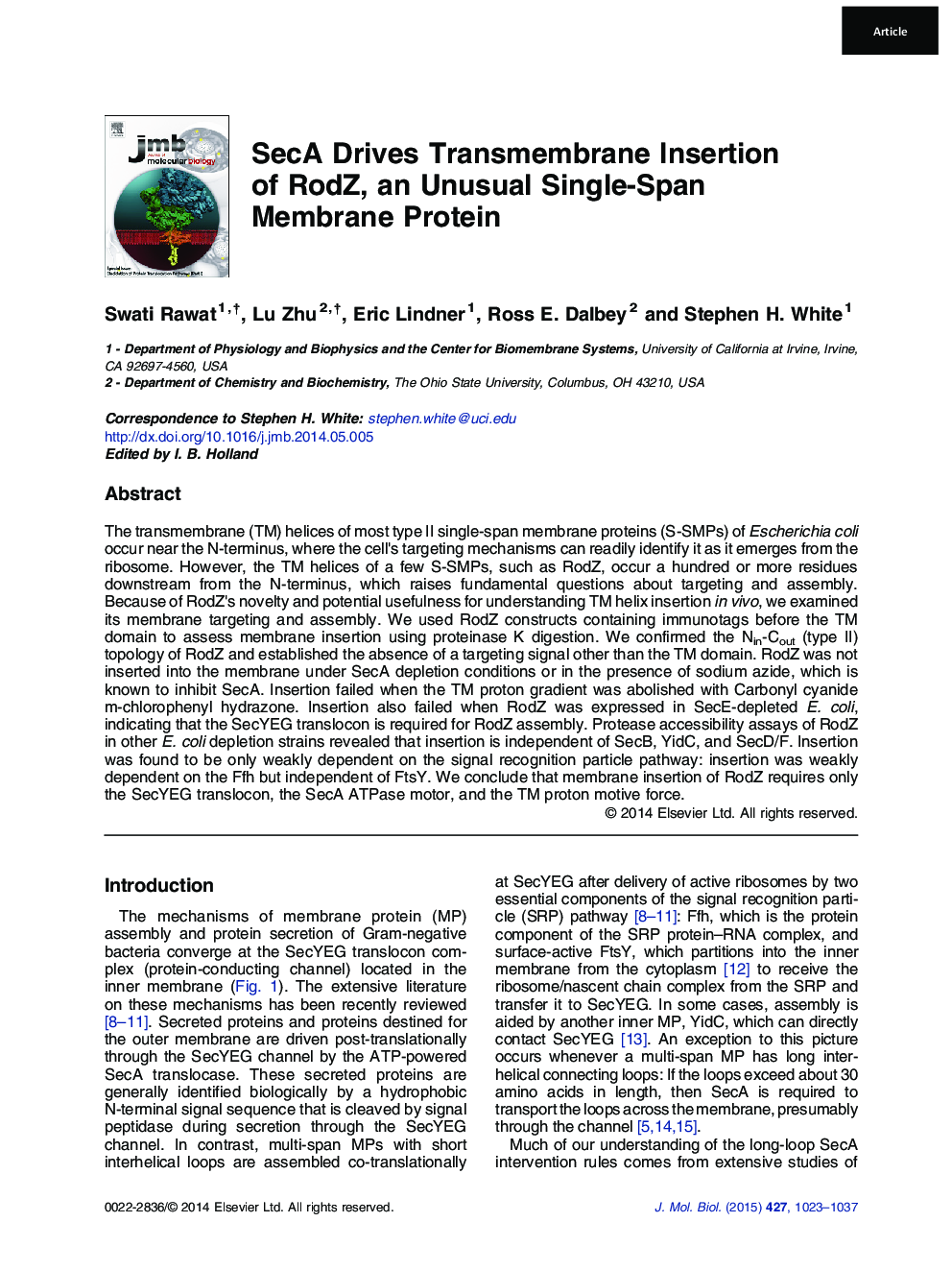| Article ID | Journal | Published Year | Pages | File Type |
|---|---|---|---|---|
| 2184383 | Journal of Molecular Biology | 2015 | 15 Pages |
•How are S-SMPs with a far downstream TM segment inserted?•One such protein, RodZ, does not require the signal recognition particle pathway.•RodZ requires only SecA, SecYEG, and a TM PMF for insertion.•RodZ is an ideal tool for studying the molecular basis for TM insertion by SecA.
The transmembrane (TM) helices of most type II single-span membrane proteins (S-SMPs) of Escherichia coli occur near the N-terminus, where the cell's targeting mechanisms can readily identify it as it emerges from the ribosome. However, the TM helices of a few S-SMPs, such as RodZ, occur a hundred or more residues downstream from the N-terminus, which raises fundamental questions about targeting and assembly. Because of RodZ's novelty and potential usefulness for understanding TM helix insertion in vivo, we examined its membrane targeting and assembly. We used RodZ constructs containing immunotags before the TM domain to assess membrane insertion using proteinase K digestion. We confirmed the Nin-Cout (type II) topology of RodZ and established the absence of a targeting signal other than the TM domain. RodZ was not inserted into the membrane under SecA depletion conditions or in the presence of sodium azide, which is known to inhibit SecA. Insertion failed when the TM proton gradient was abolished with Carbonyl cyanide m-chlorophenyl hydrazone. Insertion also failed when RodZ was expressed in SecE-depleted E. coli, indicating that the SecYEG translocon is required for RodZ assembly. Protease accessibility assays of RodZ in other E. coli depletion strains revealed that insertion is independent of SecB, YidC, and SecD/F. Insertion was found to be only weakly dependent on the signal recognition particle pathway: insertion was weakly dependent on the Ffh but independent of FtsY. We conclude that membrane insertion of RodZ requires only the SecYEG translocon, the SecA ATPase motor, and the TM proton motive force.
Graphical AbstractFigure optionsDownload full-size imageDownload high-quality image (94 K)Download as PowerPoint slide
